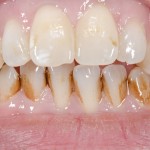
Twice daily toothbrushing with fluoridated toothpaste is the cornerstone of daily oral hygiene. It is also effective for maintaining periodontal health together with regular flossing. When these conventional approached are difficult or compromised, for example following surgery or in patients with additional needs chemotherapeutic agents and assisted brushing is warranted. While mouthrinses are the most commonly uses method of delivering chemotherapeutic agents oral sprays are a potential alternative.
The aim of this review was to assess the efficacy of antiseptic oral sprays in the control of dental plaque and gingivitis.
Methods
Searches were conducted in the PubMed, Cochrane Library and Web of Science databases. Randomised controlled trials (RCTs) on the use of oral sprays providing information on plaque or gingival inflammation and published in English were considered. Two reviewers independently screened the studies, abstracted data and assessed risk of bias using the Cochrane tool. Random effects meta-analysis was conducted.
Results
- 20 RCTs involving a total of 720 patients were included
- Chlorhexidine (0.12 or 0.2%) was used in the majority of the studies (14)
- Hyaluronic acid (HA); 0.2% hexetidine; 0.2% stannous fluoride; triclosan (TRN); cetylpyridinium chloride (CPC); and benzydamine hydrochloride (B-HCl) were used in 6 studies.
- 4 studies involved patients <15; 6 used healthy adults with 10 using physically or mentally challenged patients.
- 14 of the 20 studies reported significant reductions in dental plaque ranging from 22% to 78%.
- 11 out of the 20 studies showed significant improvement in gingival health with 13% to 75% reductions in Gingival Index (GI) scores
- 8 studies contributed to the meta-analysis
- Meta-analysis (3 studies) of 0.2% chlorhexidine (CHX) spray intervention, without prophylaxis at baseline, showed reductions in Plaque Index (PI) = 0.74 (95%CI: -1.03 to -0.45) and Gingival Index (GI) = 0.22 (95% CI: -0.38 to -0.06).
- 5 studies provided a prophylaxis before study initiation. 3 used 0.2% CHX spray, meta-analysis demonstrated an increase of 0.18 (95% CI: -0.01 to 0.37) in PI scores.
- 2 RCTs compared 0.12% and 0.2% CHX spray, and a meta-analysis showed increases of 1.71 (95% CI: 1.27 to 2.14) and 1.58 (95% CI: 1.23 to 1.93), respectively, in PI scores.
Conclusions
The authors concluded: –
Available evidence suggests that oral sprays are an acceptable delivery method for antiseptic agents. CHX is the most widely investigated antiseptic agent used in oral sprays, and meta-analyses suggested it to be effective in reducing plaque scores and gingival inflammation. However, considering that bias to some extent existed in the included studies, the findings in this review should be interpreted with caution.
Comments
Three major databases were used for this reviews search. However, only English language studies were included so additional relevant studies may have been excluded, a point noted by the authors. Many of the included studies were small (7 with fewer than 20 patients) and of short duration. While study quality was assessed using the Cochrane risk of bias tool only the overall summary was presented rather than the individual study data, but it is noticeable that only 25% of studies were at low risk of bias for random sequence generation and about 10% for allocation concealment raising questions about the randomisation procedures. While a range of antiseptic agent were used chlorhexidine was the only agent for which a meta-analysis was possible with small reductions in plaque indices being demonstrated. As the authors suggest the results suggest be interpreted with caution and further high quality studies are needed.
Links
Primary Paper
Zhang J, Ab Malik N, McGrath C, Lam O. The effect of antiseptic oral sprays on dental plaque and gingival inflammation: A systematic review and meta-analysis. Int J Dent Hyg. 2018 Feb 6. doi: 10.1111/idh.12331. [Epub ahead of print] Review. PubMed PMID: 29405627.
Other references
Dental Elf -3rd Apr 2017
